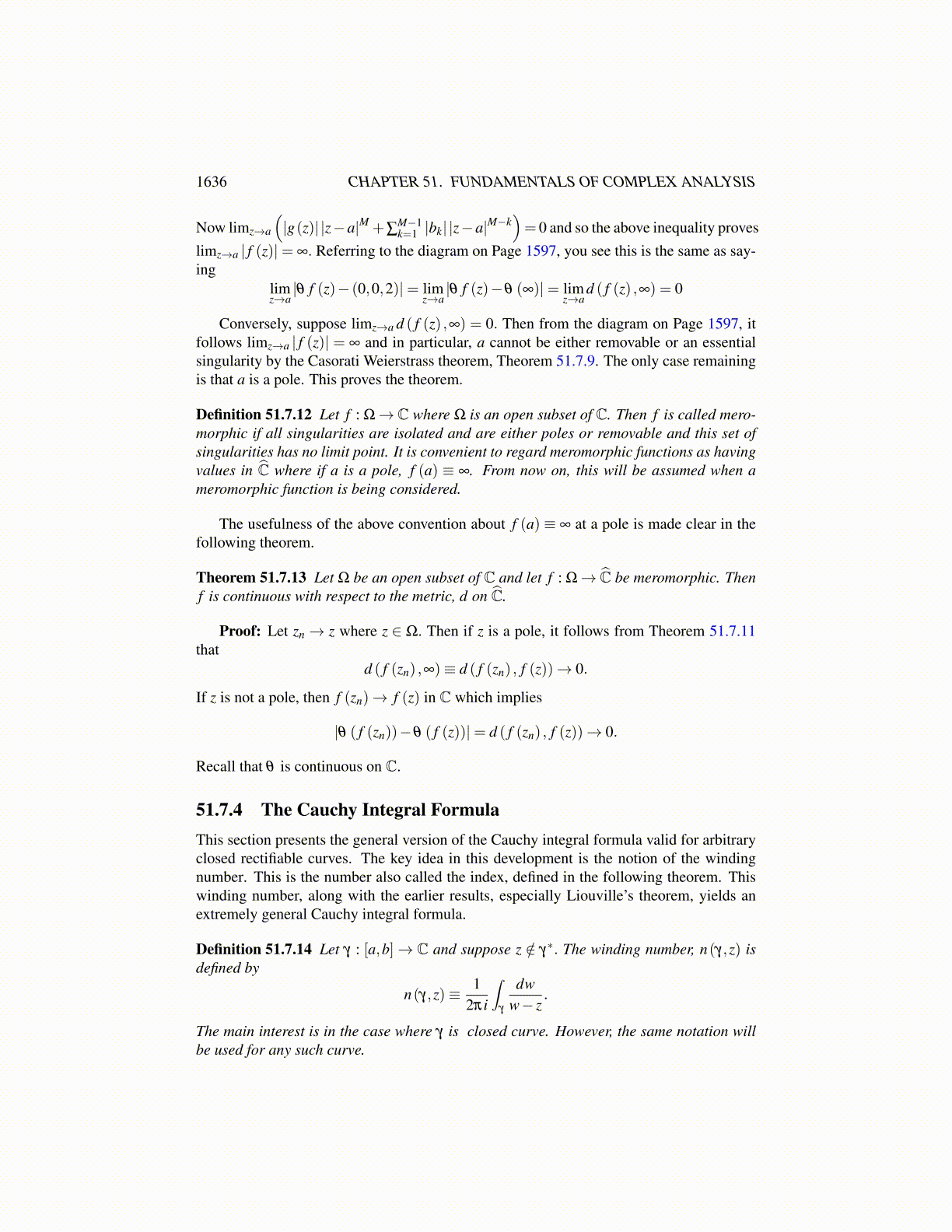
1636 CHAPTER 51. FUNDAMENTALS OF COMPLEX ANALYSIS
Then f ′ (x) exists for all x∈R. Indeed, if x ̸= 0, the derivative equals 2xsin 1x −cos 1
x whichhas no limit as x→ 0. However, from the definition of the derivative of a function of onevariable, f ′ (0) = 0.
51.7.3 Classification Of Isolated SingularitiesFirst some notation.
Definition 51.7.6 Let B′ (a,r) ≡ {z ∈ C such that 0 < |z−a|< r}. Thus this is the usualball without the center. A function is said to have an isolated singularity at the point a ∈Cif f is analytic on B′ (a,r) for some r > 0.
It turns out isolated singularities can be neatly classified into three types, removablesingularities, poles, and essential singularities. The next theorem deals with the case of aremovable singularity.
Definition 51.7.7 An isolated singularity of f is said to be removable if there exists ananalytic function, g analytic at a and near a such that f = g at all points near a.
Theorem 51.7.8 Let f : B′ (a,r)→ X be analytic. Thus f has an isolated singularity at a.Suppose also that
limz→a
f (z)(z−a) = 0.
Then there exists a unique analytic function, g : B(a,r)→ X such that g = f on B′ (a,r) .Thus the singularity at a is removable.
Proof: Let h(z) ≡ (z−a)2 f (z) ,h(a) ≡ 0. Then h is analytic on B(a,r) because it iseasy to see that h′ (a) = 0. It follows h is given by a power series,
h(z) =∞
∑k=2
ak (z−a)k
where a0 = a1 = 0 because of the observation above that h′ (a) = h(a) = 0. It follows thatfor |z−a|> 0
f (z) =∞
∑k=2
ak (z−a)k−2 ≡ g(z) .
This proves the theorem.What of the other case where the singularity is not removable? This situation is dealt
with by the amazing Casorati Weierstrass theorem.
Theorem 51.7.9 (Casorati Weierstrass) Let a be an isolated singularity and suppose forsome r > 0, f (B′ (a,r)) is not dense in C. Then either a is a removable singularity or thereexist finitely many b1, · · · ,bM for some finite number, M such that for z near a,
f (z) = g(z)+M
∑k=1
bk
(z−a)k (51.7.21)
where g(z) is analytic near a.